Mature cystic teratoma of the ovary: a cutting edge overview on imaging features
- PMID: 28105559
- PMCID: PMC5359144
- DOI: 10.1007/s13244-016-0539-9
Mature cystic teratoma of the ovary: a cutting edge overview on imaging features
Abstract
Mature cystic teratoma (MCT) is the most common neoplasm of the ovary and includes at least two well- differentiated germ cell layers. Different combinations of mature tissue derivatives with varying arrangements in the tumour cause a wide spectrum of radiological presentation ranging from a purely cystic mass to a complex cystic mass with a considerable solid component. In different imaging modalities, each radiological feature reflects a specific pathologic equivalent that forms because of diverse compositions of histological components. Understanding uncommon findings as well as the classic signs with basic knowledge of pathological equivalents permits a more accurate diagnosis and guides adequate treatment. In this review, radiological features of MCT in different imaging modalities (US, CT, MR imaging) including specific signs and useful radiological artefacts with brief emphasis on pathological basics are discussed. Teaching points • Ovarian mature cystic teratomas (MCTs) have a wide spectrum of radiological presentation.• Each radiological feature of MCT reflects a specific pathologic equivalent.• Understanding radiological signs with basic knowledge of pathology can permit a more accurate diagnosis.
Keywords: Cyst; Dermoid; Neoplasm; Ovary; Teratoma.
Conflict of interest statement
The authors declare that they have no conflicts of interest concerning this article.
Figures



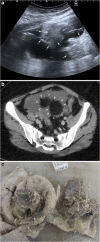









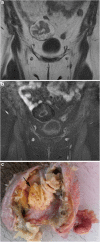
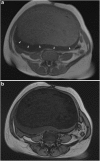


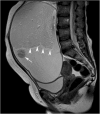



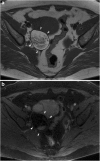

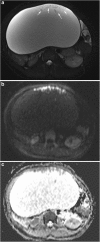

References
-
- Weiss JR, Burgess JR, Kaplan KJ. Fetiform teratoma (homunculus) Arch Pathol Lab Med. 2006;130:1552–1556. - PubMed
Publication types
LinkOut - more resources
Full Text Sources
Other Literature Sources

